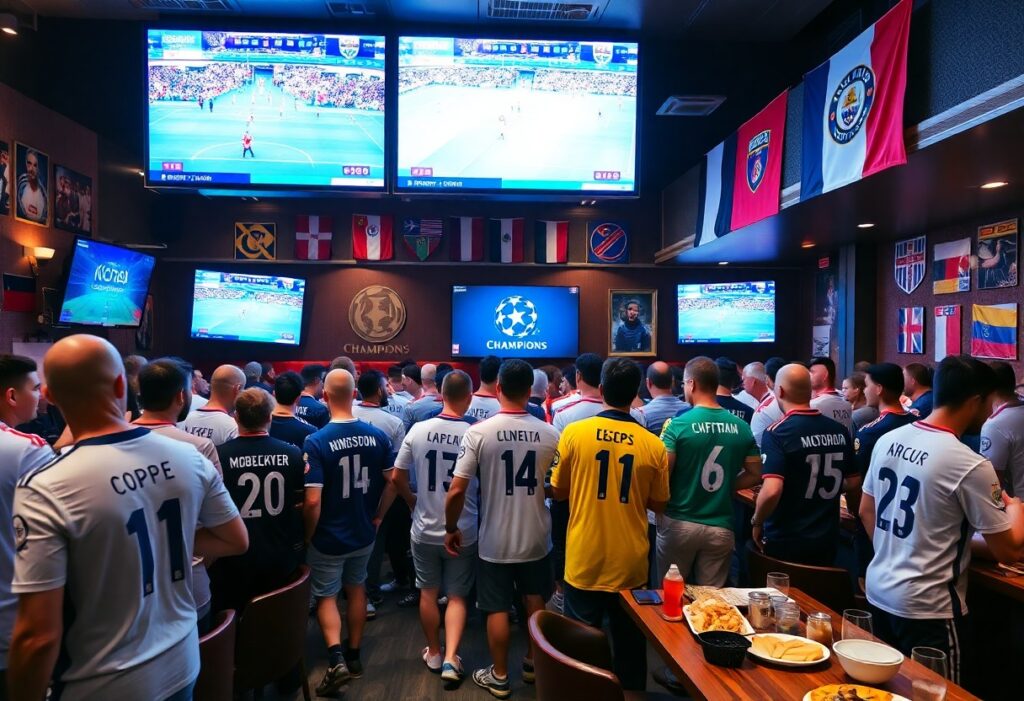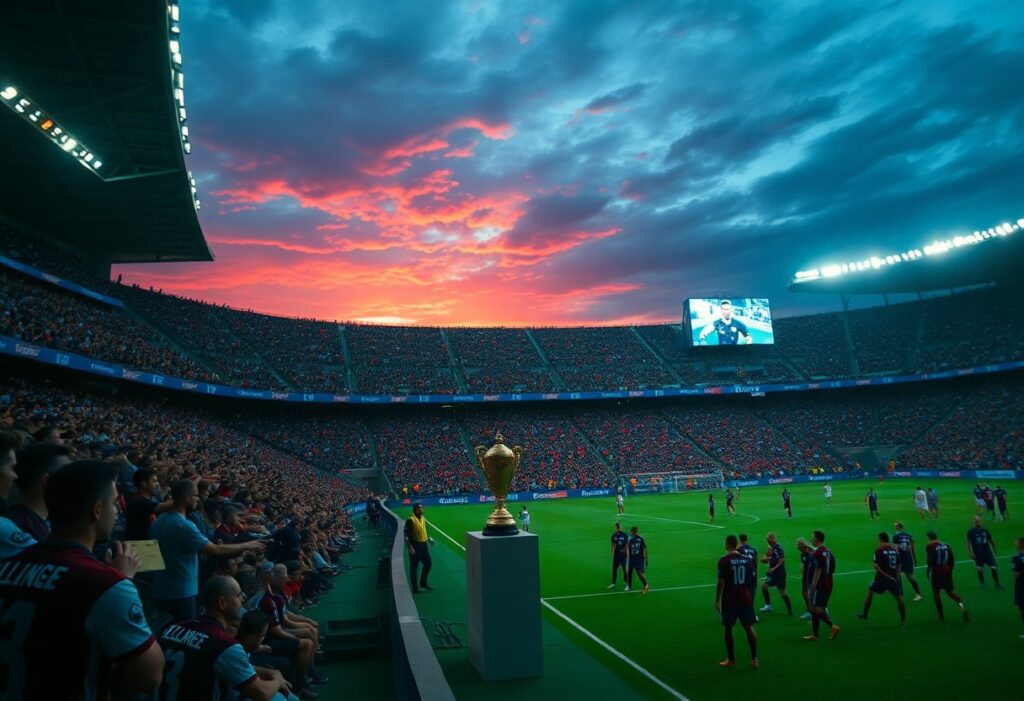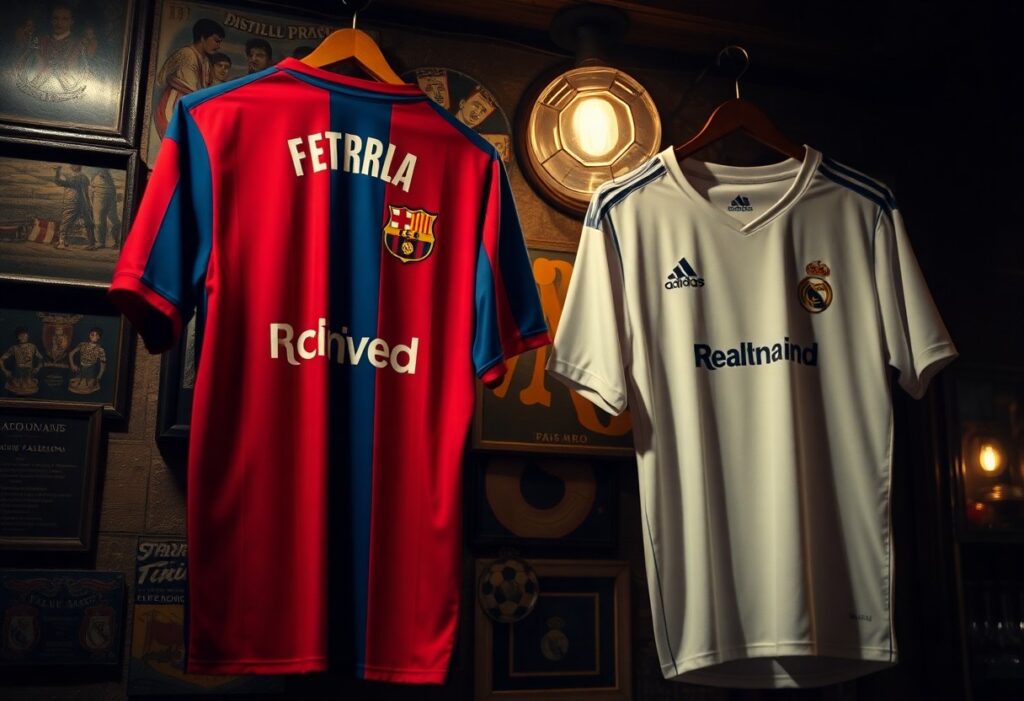
Culture in football has evolved significantly, with the UEFA Champions League playing a vital role in shaping its landscape. This prestigious tournament not only showcases elite talent but also amplifies the global reach of the sport, connecting fans across continents. The commercialization of football through the Champions League has led to a profound economic impact, but it has also sparked concerns over inequality and the disconnection of grassroots clubs. Ultimately, the competition has become a symbol of unity and rivalry, profoundly influencing the identity of football worldwide.
The Evolution of the Champions League
The Champions League, launched in 1992, marked a significant transformation from the European Cup, which had operated since 1955. The desire for increased revenue and global marketing opportunities drove this evolution, allowing clubs to showcase their talent on a larger stage. With a broader competitive framework, this shift reflected the growing commercialization of football and the influence of television rights.
Structural Changes Over Time
Over the years, the Champions League has undergone numerous structural modifications, impacting its format and participating teams. From the introduction of the group stage in 1991 to the expansion of qualifying rounds, each change aimed to enhance competitiveness and fan engagement. The tournament evolved from a knockout structure to a more inclusive setup, ensuring that teams from across Europe have a chance to compete at the highest level.
The Champions League’s structural changes have significantly reshaped its landscape. Initially composed of just 16 teams, the tournament now features 32 teams in the group stage, a decision made in 1999 for heightened excitement and commercial viability. The introduction of seeding and coefficient rankings has ensured that elite clubs maintain their status while also allowing lower-ranked teams opportunities to shine. Shifts in qualification criteria, such as league placement and performance-based entries, have enabled a mix of traditional powerhouses and rising clubs, fostering a rich, competitive environment that reflects the dynamic nature of global football today.
Global Audience Engagement
The UEFA Champions League has transformed football fandom into a global phenomenon, reaching millions through various platforms. Spectators in remote corners of the world now center their schedules around match days, with a staggering 400 million viewers tuning in for the final each year. This unprecedented engagement fosters a diverse fan base, interconnected through their shared passion for the game and their support for clubs that symbolize personal and cultural identities.
Television and Streaming Impact
Television broadcasts and streaming services have revolutionized how fans access Champions League matches. With rights sold for billions, platforms like Amazon Prime and Paramount+ have expanded viewership options significantly. As a result, Champions League matches now enjoy coverage in over 200 countries, accommodating fans who demand flexibility in consumption through live and on-demand formats.
Social Media and Fan Interaction
Social media platforms have emerged as pivotal channels for fan engagement during the Champions League. Clubs and players utilize these avenues to connect with their global audience, sharing behind-the-scenes content, live updates, and interactive polls. In 2022, UEFA reported over 300 million interactions across platforms like Twitter, Instagram, and Facebook during the tournament, illustrating how social media fuels conversation and builds communities among fans.
Fan interaction on social media not only enhances the viewing experience but also cultivates a sense of belonging among supporters worldwide. Hashtags like #UCL and club-specific tags trend during matches, allowing fans to share their thoughts in real-time, engage with fellow enthusiasts, and celebrate moments together, regardless of geographical distance. This dynamic creates virtually accessible communities that transcend traditional barriers, turning every match into a shared global event and fostering loyalty toward clubs and players alike.
Financial Implications for Clubs
The financial ramifications of participating in the Champions League extend well beyond ticket sales and promotions, profoundly affecting club budgets and strategies. Success in this prestigious tournament can significantly enhance a club’s revenue streams, including broadcasting rights, sponsorship deals, and merchandise sales. Clubs that progress deep into the competition often experience a windfall effect, with increased fan engagement translating into heightened financial security and competitive strength in both domestic and European contexts.
Revenue Generation
Revenue generation for clubs entering the Champions League can reach into the hundreds of millions. The broadcasting rights alone generated approximately €3.47 billion for the 2021-2024 cycle, with clubs receiving a distribution based on their performance and market size. This influx of income can allow clubs to invest in better talent, infrastructure, and fan engagement initiatives, further enhancing their competitive edge.
Economic Disparities
Economic disparities in football have become more pronounced due to the Champions League. While top clubs reap significant financial rewards, lower-tier teams often face challenges in attracting investments or maintaining competitive parity. This disparity can lead to a cycle where wealthier clubs dominate not only in European competitions but also in their domestic leagues, making it increasingly difficult for smaller clubs to compete on equal footing.
The widening economic gap is evident with data showcasing that in the 2022-2023 season, the top four clubs in the Champions League collectively earned over €1.5 billion, while smaller teams received a mere fraction of this amount, often less than €20 million. This reality creates a scenario where elite clubs can afford premium talent and facilities, reinforcing their dominance and leaving smaller clubs struggling for survival or forced to rely on developing young talent. As the Champions League continues to grow economically, the concern of maintaining competitive balance within leagues remains a pertinent issue for the future of football.
Cultural Exchange Through Football
The UEFA Champions League not only showcases top-tier football but also serves as a melting pot for diverse cultures. Clubs from various countries engage in fierce competition while simultaneously bringing together players, coaching styles, and fan traditions. Matches transform into cultural exchanges, where spectators experience an array of customs, foods, and celebrations, often leading to the formation of lasting bonds among fan bases worldwide.
Player Movement and Diversity
Player transfers across nations create a rich tapestry of cultures within teams. The Champions League attracts talent from around the globe, with players from Africa, South America, and Asia joining European clubs. This influx fosters diversity, as different playing styles and perspectives enhance the game and encourage a broader understanding of football as a universal language.
Influence on Local Football Cultures
Local football cultures experience significant influence from the Champions League, as fans adopt international practices that enrich their own traditions. Clubs often adopt similar training methods, fan engagement strategies, and merchandising approaches seen in successful Champions League teams. The impact extends beyond techniques, as the excitement surrounding these matches inspires local clubs to develop rivalries and engage broader communities in football.
The Champions League’s influence shapes local football cultures by introducing innovative tactics and fan experiences that previously may not have existed. For instance, European clubs emphasize youth academies and community outreach, which inspires local teams to invest in grassroots initiatives. The allure of international stardom encourages aspiring players to pursue football seriously, driving up participation rates in youth leagues, while viewing parties and supporter gatherings foster a sense of belonging among fans. This exchange ultimately leads to a richer, more globally connected football culture that echoes the values of the Champions League itself.
Rivalries and Their Global Reach
Rivalries in the Champions League extend beyond the pitch, fostering a global fan culture that transcends borders. Iconic clubs like Barcelona and Real Madrid, or Liverpool and Manchester United, share legacies that resonate with millions, fueling passionate allegiances across continents. These matchups often see viewership numbers soar to over 200 million globally, illustrating not only the competitive spirit but the rich historical narratives behind these encounters.
Iconic Matches and Moments
Memorable matches such as Manchester United’s remarkable comeback against Bayern Munich in 1999 exemplify the drama that the Champions League can deliver. In high-stakes encounters, the underdog often triumphs, creating stories that echo in fan conversations for decades. Such moments shape the mythos surrounding clubs, sparking vibrancy in rivalries and promoting a culture steeped in wonder and excitement.
The Role of Supporters
Supporters are at the heart of any Champions League rivalry, driving their teams forward both in stadiums and online. Their unwavering loyalty and passion amplify the competition, extending the narrative beyond mere football. Clubs witness financial benefits as passionate fans increase merchandise sales and generate revenue through viewership, further intertwining the global community with their home sides.
Supporters not only raise the atmosphere during matches but also serve as the backbone of each club’s identity. With dedicated fan groups traveling thousands of miles to follow their teams, the notion of community extends internationally; for instance, the 2020 Champions League saw fans across Asia organizing viewing parties to cheer for their European favorites. This active engagement emphasizes how rivalries contribute significantly to each club’s legacy and cultural impact, drawing in new generations of football enthusiasts globally.
Future Outlook
The future of the UEFA Champions League holds potential for significant evolution, aligning itself with changing dynamics in football culture and fan engagement. As competition intensifies, innovative strategies will be necessary to maintain relevance, deepen global fan loyalty, and adapt to emerging trends, all while preserving the tournament’s legacy.
Potential Changes in Competition Format
Anticipated modifications to the competition format may include expanded participation or an adjustment in group dynamics. Proposals suggest a shift towards a league-style format, where teams play more matches against diverse opponents, potentially enhancing excitement and offering broader exposure to various clubs and their fanbases.
Evolving Role of Technology
Technology’s growing presence in the Champions League could redefine how fans engage with the tournament. Advances in data analytics, augmented reality, and real-time social media interaction will continue to enhance the viewing experience, making it more immersive and personalized.
For instance, the integration of AI-driven statistics offers fans deeper insights into player performances, while virtual reality experiences allow supporters to feel as if they are part of the action, even from afar. Enhanced broadcasting technologies may also lead to smarter commentary and interactive viewing options, enabling fans to choose camera angles or player stats they wish to follow during matches. Overall, technology will further blur the lines between physical and digital fan experiences in the Champions League.
To wrap up
Hence, the UEFA Champions League has fundamentally transformed global football culture, serving as a catalyst for international fan engagement and commercial growth. By showcasing elite clubs and players on a prestigious platform, it fosters a sense of rivalry and passion that transcends borders. Its influence is evident in the globalization of football marketing and the rise of diverse fanbases, contributing to an interconnected community that celebrates the sport. Ultimately, the Champions League is not merely a tournament; it is a pivotal force that shapes the identity and future of football worldwide.
FAQ
Q: How has the UEFA Champions League influenced local football cultures around the world?
A: The UEFA Champions League has elevated the visibility of local football clubs, inspiring grassroots movements and increasing participation at the youth level. As fans connect with international clubs and players, local teams often adopt similar branding and playing styles, enriching their cultural identity and fostering a sense of community pride.
Q: What role has the Champions League played in the commercialization of football?
A: The Champions League has significantly contributed to the commercialization of football by creating lucrative broadcasting deals, sponsorship opportunities, and merchandise sales. This influx of revenue has allowed clubs to invest in better facilities, youth academies, and talent acquisition, markedly altering the financial landscape of the sport globally.
Q: In what ways has the Champions League affected fan engagement and experience?
A: The Champions League has transformed fan engagement through enhanced match day experiences, digital platforms, and social media interactions. The competition allows fans to engage with clubs and players on a global scale, utilizing various content formats, such as live streams, behind-the-scenes access, and fan forums, thus deepening their connection to the sport.


